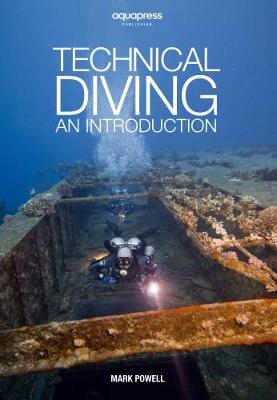During the last few years technical diving has become much more popular and has moved into mainstream diving. As a result a significant number of recreational divers are moving towards technical diving. Despite this, there are still many misconceptions about what technical diving actually means and what is involved. Introduction to Technical Diving - An Introduction by Mark Powell gives a straightforward overview of technical diving and dispels many of the myths surrounding this area. It explores what is meant by technical diving, what is involved, the risks that arise and how you can move towards this type of diving.
Section one describes technical diving in general and illustrates some of the differences between technical and recreational diving as well as explaining some of the things that recreational divers can learn from technical divers.
Section two explains some of the ideas behind this form of diving. It defines exactly what we mean by technical diving as well as why it has become so popular. This section then explains how to make a start in technical diving and the type of divers who tend to get into technical diving. For these divers the second section then goes on to explain what to expect from a technical diving course. Finally this section discusses how accident analysis has been used to shape some of the concepts in technical diving as well as some of the mental aspects of this type of diving.
The third section then goes on give an overview of technical diving equipment and explains why this is different to the equipment used in recreational diving. There are many different opinions about technical diving equipment and this section of the book lays out the advantages and disadvantages of the various options so that divers can make an informed decision about their equipment choices. Topics such as twinset configuration, Hogarthian gear configuration and choice of stage cylinders are all covered for the open circuit diver.
The fourth section covers the various skills required for technical diving are discussed in detail including buoyancy control, trim, tram diving, problem shutdown and valve shutdowns.
Section five covers the issues involved in rebreather diving and the various choices available to divers looking to switch to a rebreather.
Section six discusses the various aspects of technical dive planning including decompression planning, dealing with narcosis, avoiding oxygen toxicity and gas planning. Finally this section covers some of the various aspects of planning for specific situations such as wreck, cave penetration and mixed gas expedition diving.
The book is aimed at anyone who wants to know more about technical diving. Whether you are looking to take a technical diving course, are looking to improve your skills or simply want to find out more about what's involved then this book will provide a comprehensive overview. Even those divers who are not tempted to venture into this area of the sport can benefit from this book as it also discusses what lessons can be learnt from technical diving in order to improve normal recreational diving.
- ISBN13 9781905492312
- Publish Date 5 March 2018
- Publish Status Active
- Publish Country GB
- Imprint AquaPress
- Format Paperback
- Pages 240
- Language English
